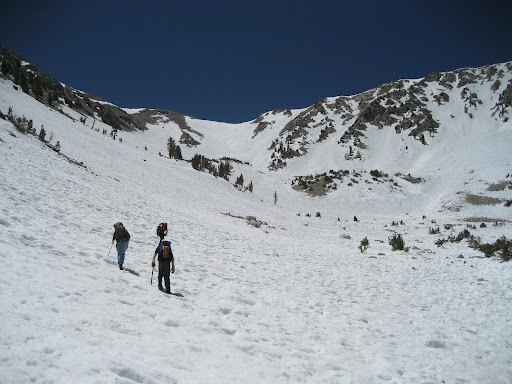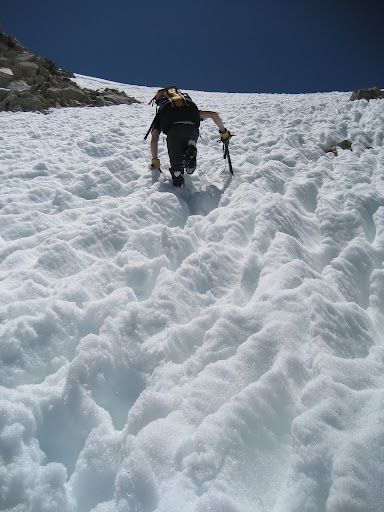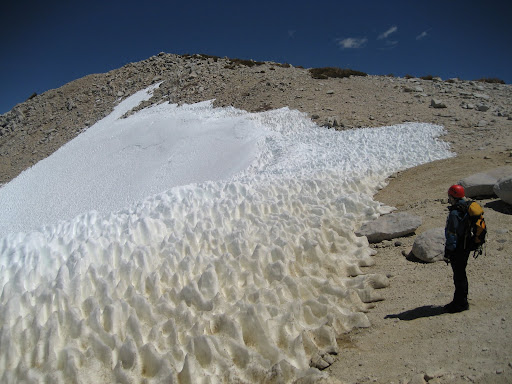May 29, 2008
Fun Canyon, Miserable and Epic 'Shwhacking
Trip Stats:
Roundtrip Distance: About 2.5 miles
Start/End: Glendora Ridge Road near Baldy Village
Gain/Loss: 1200ft / 360m
Time: 11 hours (for us)
Difficulties: 6 rappels, some downclimbing, poison oak, one terrible exit
Other Information: Chris Brennen's Writeup
Overview:
Southern California canyons are always hit-and-miss, especially those that are not 'classic' or 'trade' canyons. Falling Leaf Canyon, though beautiful and interesting as a canyon, certainly demonstrated the shortcomings of a less-traveled route.
Canyon Description:
The canyon started off with the expected bang: a 150' rappel (45m) which we did as a single shot with the 400' of rope we carried. I wore a wetsuit (nice, but not needed) and Jen didn't.
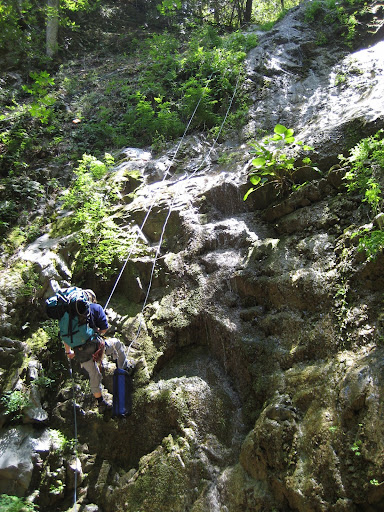
We essentially followed Chris Brennen's description down the whole canyon, although the description usually stayed in our pocket and we solved problems or rappels as they came up. We read it every so often only to confirm we were in the right canyon. In the canyon we differed from the writeup in the following ways:
- One of the shorter rappels we used a hand line on, and so we appreciated having about 15' of webbing available for quick use.
- Many of the downclimbs in Chris's report were still useable, but some were so washed out that it was simply easier to rappel.
- We downclimbed the "awkward series of small waterfalls in a slot with a blind corner" that Chris avoided, it was perhaps the most fun part of the canyon
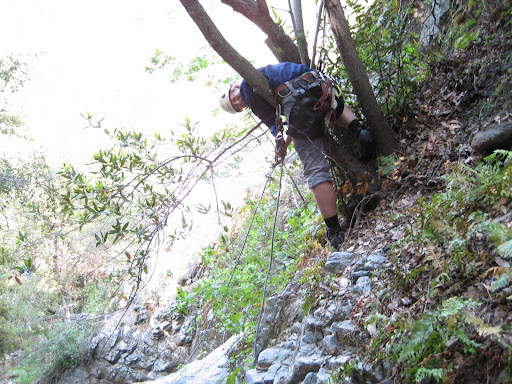
Then we had some late lunch, sent an OK message from my SPOT messenger to see how well it works in a wooded tight canyon (the message arrived just fine), and continued down into Cow Canyon for the exit.
Exit Description:
Cow Canyon itself was open, beautiful, and fun. Here we are drying out in the sun and trying to figure out where we are in relation to the exit point Chris describes:
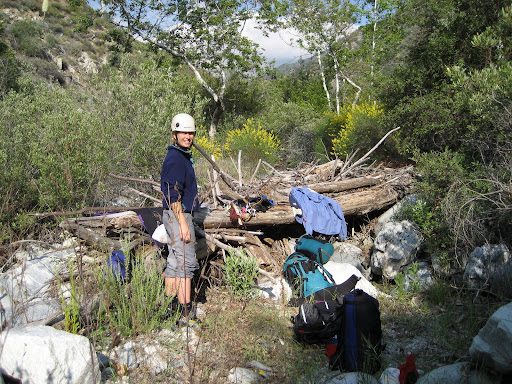
After hiking up Cow Canyon for an hour and a half, we felt like we were getting close to the described exit point. We'd been ahead of Chris's time estimates all day, and all of a sudden the canyon made a sudden left turn - time to start looking for the exit.
We paused to consider: We saw a 'steep chute', and followed it to a 'earthen slope' on the left. So far so good! We continued up what we thought was Chris's advertised exit, with a canyon off to our right (probably the 'dry falls' we were supposed to be climbing around) and boy, it sure was steep. We thought we were in the right place.
Four hours later, it was dark, Jen was free soloing fifth class chossy shite rock, and we were exhausted, scratched, bloody, and totally ready to not be bushwhacking any more. (Bushwhacking being a grand understatement.)
Luckily Jen is one of the most awesome climbing partners in the world, and we helped each other in amazing ways. Eventually, we made it to the road, out of sheer luck and wild determination (the chutes and ridges to the right and left of our ridge cliffed out).
If we were to do this canyon again (probably not, given this experience) we would follow Cow Canyon all the way up to the road. Flat, open, and the exit is easily scoutable from the road itself.
After climbing (and belaying) Chris's 'shortcut' out of Little Santa Anita up 5.4 mud a few years back, I should know better than to think we can guess what he's talking about in his descriptions for 'tricky navigational challenges'.
I think the description for Falling Leaf Canyon exit was especially and badly non-descript, however: A "tree across the canyon near some big boulders where the river turns left" as the turnoff point? Really.
But, our own fault for not using our heads and making better decisions than the writeup. C'est la vie.
The Scuba Diving Butterfly:
One of the cooler things we saw in the canyon was a butterfly alive underwater! We called it the scuba diving butterfly. Here is a video of the butterfly underwater and me giving it a little poke to make it walk:
Crazy. Does anyone know how that butterfly can live under there, or why it would have swum underwater in the first place?
Thanks for reading. You can also view the rest of my photos if you like.
